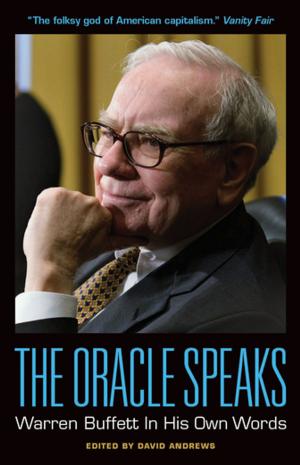Unleash Employee Engagement: 7 Initial Conditions for Outstanding Results
Business & Finance, Marketing & Sales, Research, Nonfiction, Health & Well Being, Self Help, Self Improvement, Motivational| Author: | Wally Hauck, PhD, CSP | ISBN: | 9780982959114 |
| Publisher: | Wally Hauck, PhD, CSP | Publication: | January 16, 2012 |
| Imprint: | Smashwords Edition | Language: | English |
| Author: | Wally Hauck, PhD, CSP |
| ISBN: | 9780982959114 |
| Publisher: | Wally Hauck, PhD, CSP |
| Publication: | January 16, 2012 |
| Imprint: | Smashwords Edition |
| Language: | English |
Employee engagement is the emotional “energy” employees feel for their organization that motivates them to exert extra voluntary effort to achieve success for all. This energy is an untapped resource in most organizations. It’s the leader’s job to create an environment that brings this energy forward naturally. Employee engagement is the new competitive advantage. Without it you are probably going out of business. With it you can achieve astonishing results.
This book provides leaders with 7 conditions leaders can create to produce an environment where engagement naturally emerges. It is about unleashing this natural energy to achieve surprising performance results and not forcing, driving, or controlling people toward performance. The more a leader attempts to control people, the more he/she erodes that control. Leadership is fragile and so is engagement. Employee engagement in organizations (or communities) is truly a measure of the quality of the leadership in that organization.
Disengaged employees can damage a business by just barely doing the minimum work expected. Countries can also be damaged by citizens revolting against a leader when their tipping point is reached. We have seen examples of this in the Middle East, in Egypt, Libya, and Syria when engaged protesters were able to overthrow their country’s leaders.
Employee engagement can either support the leader or damage his/her influence. Employee engagement significantly impacts organizational performance.
Employee engagement is more important than ever because of the speed and frequency of change. Without engagement organizations will not be able to adapt quickly enough to protect their market position. Engagement enables knowledge accumulation and knowledge accumulation is the new predictor of future profitability. If you are not building knowledge you are going out of business.
There are two global trends influencing the need for engagement: Organizations must become more like “self-organizing systems” and organizations must attract and retain talent that knows how to lead and manage in a social network environment. These global trends are shaping the organizations of the future and unless we adapt we can risk losing our competitive edge.
This book provides leaders with 7 conditions that create an environment where engagement can naturally emerge. It is about unleashing this natural energy to achieve surprising performance results and not forcing, driving, or controlling people toward performance.
Employee engagement is the emotional “energy” employees feel for their organization that motivates them to exert extra voluntary effort to achieve success for all. This energy is an untapped resource in most organizations. It’s the leader’s job to create an environment that brings this energy forward naturally. Employee engagement is the new competitive advantage. Without it you are probably going out of business. With it you can achieve astonishing results.
This book provides leaders with 7 conditions leaders can create to produce an environment where engagement naturally emerges. It is about unleashing this natural energy to achieve surprising performance results and not forcing, driving, or controlling people toward performance. The more a leader attempts to control people, the more he/she erodes that control. Leadership is fragile and so is engagement. Employee engagement in organizations (or communities) is truly a measure of the quality of the leadership in that organization.
Disengaged employees can damage a business by just barely doing the minimum work expected. Countries can also be damaged by citizens revolting against a leader when their tipping point is reached. We have seen examples of this in the Middle East, in Egypt, Libya, and Syria when engaged protesters were able to overthrow their country’s leaders.
Employee engagement can either support the leader or damage his/her influence. Employee engagement significantly impacts organizational performance.
Employee engagement is more important than ever because of the speed and frequency of change. Without engagement organizations will not be able to adapt quickly enough to protect their market position. Engagement enables knowledge accumulation and knowledge accumulation is the new predictor of future profitability. If you are not building knowledge you are going out of business.
There are two global trends influencing the need for engagement: Organizations must become more like “self-organizing systems” and organizations must attract and retain talent that knows how to lead and manage in a social network environment. These global trends are shaping the organizations of the future and unless we adapt we can risk losing our competitive edge.
This book provides leaders with 7 conditions that create an environment where engagement can naturally emerge. It is about unleashing this natural energy to achieve surprising performance results and not forcing, driving, or controlling people toward performance.















